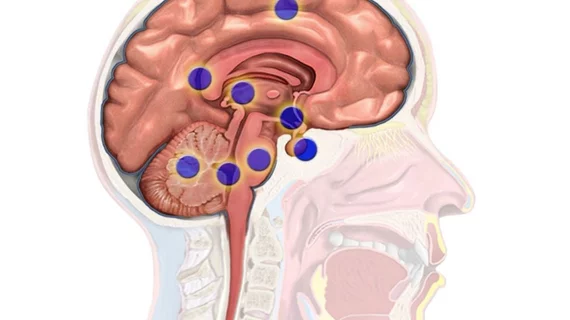UVA Health receives $3.1M grant for using ultrasound to deliver drugs into the brain
The University of Virginia School of Medicine has received a $3.1 million grant from the National Institute of Health to develop new ways to treat cerebral cavernous malformations (CCMs) with focused ultrasound.
According to a statement from UVA Health, the health system of the university, surgery remains the primary treatment for CCMs—vascular lesions that can cause seizures, headaches, paralysis and even death. However, this grant aims to change that. UVA will use the funds to develop new drug delivery methods to treat overgrowths in blood vessels, combining focused ultrasound to help medications reach target areas.
“Many CCM patients are in desperate need of more-effective treatment options. Some patients have surgically inaccessible lesions that can only be treated with radiation, but such treatments can have strong side effects and take a long time to show efficacy,” Richard J. Price, PhD, co-director of UVA Health’s Focused Ultrasound Cancer Immunotherapy Center said in the statement. “We ultimately wish to treat these lesions noninvasively with biologic drugs and gene therapies, but these therapies are relatively large in size and do not penetrate well into brain tissue. Low-intensity focused ultrasound can be steered almost anywhere in the brain. It gives us a unique opportunity to precisely deliver such advanced therapies right to the CCM.”’
If successful, the drug therapy would dramatically reduce the risk to patients that comes from brain surgery. Drugs currently have limited effectiveness on CCMs, especially in the brain where the blood-brain barrier tends to block therapeutics from reaching the lesions. UVA said its researchers are aiming to briefly breach the blood-brain barrier in a precise way, utilizing microbubbles in conjunction with focused sound waves to temporarily open the barrier in a specific area just to administer drugs. After which, the barrier will ideally be closed and function normally.
In the university’s previous research conducted on mice, the combination of soundwaves and microbubbles was enough to stabilize CCMs even without medication, suggesting drugs may offer additional benefits. The goal is to eliminate the need to cut into a patient’s skull to deliver effective treatment for CCMs.
The research grant is expected to last five years. In its statement, UVA Health said it is a pioneer in the field of developing therapies with focused ultrasound, citing how sound waves are being used to treat Parkinson’s disease as a result of its research programs.
“Given our outstanding focused ultrasound infrastructure and neurosurgical expertise at UVA, I am hopeful that we can translate successful preclinical findings into trials fairly soon,” Price added. “I continue to be fascinated by how we can safely, and noninvasively, manipulate tissue and blood vessels in a controlled manner with sound waves. Fingers crossed this is yet another disease indication that will benefit from focused ultrasound technology.”

